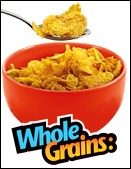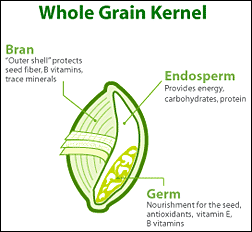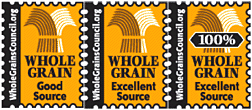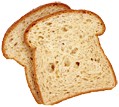 |
||
 |
||
|
|
|
Active Hydrogen
Adrenal Extracts
Alanine
Alpha-Linolenic Acid
Alpha-Lipoic Acid
AMP
Amylase Inhibitors
Arginine
Bee Pollen
Beta Carotene
Beta-glucan
Betaine
Beta-Sitosterol
Biotin
Borage Oil
Boron
Bovine Cartilage
Bovine Colostrum
Brewer's Yeast
Bromelain
Calcium
Capsaicin
Carnitine
Carnosine
Chitosan
Chloride
Chlorophyll
Chondroitin
Chromium
CLA
Cobalt
Coenzyme Q10
Copper
Creatine
Cysteine
DHA
DHEA
DMAE
EGCG
Evening Primrose Oil
5-HTP
Fiber (Insoluble)
Fiber (Soluble)
Fish Oil
Flavonoids
Fluoride
Folate
Fumaric Acid
GABA
Gamma-Linolenic Acid
Glucomannan
Glucosamine
Glutamic Acid
Glutamine
Glutathione
Glycine
Grape Seed Extract
Histidine
HMB
Hydroxycitric Acid
Indole
Inosine
Inositol
Iodine
Ipriflavone
Iron
Isoleucine
Lactase
Lecithin
Leucine
Lipase
Lutein
Lycopene
Lysine
Magnesium
Malic Acid
Manganese
Mannose
Melatonin
Methionine
Methoxyisoflavone
Molybdenum
MSM
N-Acetyl Cysteine
NADH
Naringin
Niacin
Octacosanol
Oligosaccharides
Olive Leaf Extract
Ornithine
Oryzanol
PABA
Pancreatic Enzymes
Pantothenic Acid
Phenylalanine
Phosphatidylserine
Phosphorus
Phytic Acid
Policosanol
Potassium
Pregnenolone
Probiotics
Propolis
Psyllium
Pyridoxine
Pyruvate
Quercetin
Resveratrol
Retinol
Riboflavin
Ribose
Royal Jelly
SAMe
Selenium
Shark Cartilage
Silicon
Sodium
Spirulina
Spleen Extracts
St. John's Wort
Strontium
Sulforaphane
Sulfur
Taurine
Thiamine
Tocopherol
Tea Tree Oil
Tyrosine
Usnic Acid
Valine
Vanadium
Vinpocetine
Vitamin A
Vitamin B1
Vitamin B2
Vitamin B3
Vitamin B5
Vitamin B6
Vitamin B9
Vitamin B12
Vitamin C
Vitamin D
Vitamin H
Vitamin K
Whey Protein
Xylitol
Zinc
Abalone Shell (shi jue ming)
Abutilon Seed (dong kui zi) Acanthopanax Bark (wu jia pi) Achyranthes (niu xi) Aconite (fu zi) Acorus (shi chang pu) Adenophora Root (nan sha shen) Agkistrodon (bai hua she) Agrimony (xian he cao) Ailanthus Bark (chun pi) Akebia Fruit (ba yue zha) Albizzia Bark (he huan pi) Albizzia Flower (he huan hua) Alfalfa (medicago sativa) Alisma (ze xie) Aloe (lu hui) Alum (bai fan) Amber (hu po) Ampelopsis (bai lian) Andrographis (chuan xin lian) Anemarrhena (zhi mu) Antelope's Horn (ling yang jiao) Apricot Seed (xing ren) Areca Peel (da fu pi) Areca Seed (bing lang) Arisaema (tian nan xing) Ark Shell (wa leng zi) Arnebia (zi cao or ying zi cao) Arnica (arnica montana) Artichoke Leaves (Cynara scolymus) Ash bark (qin pi) Ashwagandha (withania somniferum) Aster (zi wan) Astragalus (huang qi) Aurantium (zhi ke [qiao]) Bamboo Juice (zhu li) Bamboo Shavings (zhu ru) Belamcanda Rhizome (she gan) Benincasa Peel (dong gua pi) Benincasa Seed (dong gua xi/ren) Benzoin (an xi xiang) Bilberry (yue ju) Biota Leaf (ce bai ye) Biota Seed (bai zi ren) Bitter Melon (ku gua) Bitter Orange Peel (ju hong) Black Cohosh (sheng ma) Black Plum (wu mei) Black Sesame Seed (hei zhi ma) Bletilla (bai ji) Boneset (ze lan) Borax (peng sha) Borneol (bing pian) Bottle Brush (mu zei) Buddleia (mi meng hua) Buffalo Horn (shui niu jiao) Bulrush (pu huang) Bupleurum (chai hu) Burdock (niu bang zi) Camphor (zhang nao) Capillaris (yin chen hao) Cardamon Seed (sha ren) Carpesium (he shi) Cassia Seed (jue ming zi) Catechu (er cha) Cat's Claw (uncaria tomentosa) Cephalanoplos (xiao ji) Celosia Seed (qing xiang zi) Centipede (wu gong) Chaenomeles Fruit(mu gua) Chalcanthite (dan fan) Chebula Fruit (he zi) Chinese Gall (wu bei zi) Chinese Raspberry (fu pen zi) Chrysanthemum (ju hua) Cibotium (gou ji) Cinnabar (zhu sha) Cinnamon (rou gui or gui zhi) Cistanche (rou cong rong) Citron (xiang yuan) Citrus Peel (chen pi) Clam Shell (hai ge ke/qiao) Clematis (wei ling xian) Cloves (ding xiang) Cnidium Seed (she chuang zi) Codonopsis (dang shen) Coix Seed (yi yi ren) Coptis (huang lian) Cordyceps (dong chong) Coriander (hu sui) Corn Silk (yu mi xu) Cornus (shan zhu yu) Corydalis (yan hu suo) Costus (mu xiang) Cranberry (vaccinium macrocarpon) Cremastra (shan ci gu) Croton Seed (ba dou) Curculigo (xian mao) Cuscuta (tu si zi) Cuttlefish Bone (hai piao xiao) Cymbopogon (xiang mao) Cynanchum (bai qian) Cynomorium (suo yang) Cyperus (xiang fu) Dalbergia (jiang xiang) Damiana (turnera diffusa) Dandelion (pu gong ying) Deer Antler (lu rong) Dendrobium (shi hu) Devil's Claw (harpagophytum procumbens) Dianthus (qu mai) Dichroa Root (chang shan) Dittany Bark (bai xian pi) Dong Quai (tang kuei) Dragon Bone (long gu) Dragon's Blood (xue jie) Drynaria (gu sui bu) Dryopteris (guan zhong) Earthworm (di long) Eclipta (han lian cao) Elder (sambucus nigra or sambucus canadensis) Elsholtzia (xiang ru) Ephedra (ma huang) Epimedium (yin yang huo) Erythrina Bark (hai tong pi) Eucalyptus (eucalyptus globulus) Eucommia Bark (du zhong) Eupatorium (pei lan) Euphorbia Root (gan sui or kan sui) Euryale Seed (qian shi) Evodia (wu zhu yu) Fennel (xiao hui xiang) Fenugreek (hu lu ba) Fermented Soybeans (dan dou chi) Flaxseed (ya ma zi) Fo Ti (he shou wu) Forsythia (lian qiao) Frankincense (ru xiang) Fritillaria (chuan bei mu) Gadfly (meng chong) Galanga (gao liang jiang) Galena (mi tuo seng) Gambir (gou teng) Gardenia (zhi zi) Garlic (da suan) Gastrodia (tian ma) Gecko (ge jie) Gelatin (e jiao) Genkwa (yuan hua) Germinated Barley (mai ya) Ginger (gan [sheng] jiang) Ginkgo Biloba (yin xing yi) Ginseng, American (xi yang shen) Ginseng, Asian (dong yang shen) Ginseng, Siberian (wu jia shen) Glehnia (sha shen) Glorybower (chou wu tong) Goldenseal (bai mao liang) Gotu Kola (luei gong gen) Green Tea (lu cha) Gymnema (gymnema sylvestre) Gynostemma (jiao gu lan) Gypsum (shi gao) Halloysite (chi shi zhi) Hawthorn (shan zha) Hemp Seed (huo ma ren) Homalomena (qian nian jian) Honey (feng mi) Honeysuckle Flower (jin yin hua) Honeysuckle Stem (ren dong teng) Houttuynia (yu xing cao) Huperzia (qian ceng ta) Hyacinth Bean (bai bian dou) Hyssop (huo xiang) Ilex (mao dong qing) Imperata (bai mao gen) Indigo (qing dai) Inula (xuan fu hua) Isatis Leaf (da qing ye) Isatis Root (ban lan gen) Java Brucea (ya dan zi) Jujube (da zao) Juncus (deng xin cao) Kadsura Stem (hai feng teng) Katsumadai Seed (cao dou kou) Kelp (kun bu) Knotweed (bian xu) Knoxia root (hong da ji) Kochia (di fu zi) Lapis (meng shi) Leech (shui zhi) Leechee Nut (li zhi he) Leonorus (yi mu cao) Lepidium Seed (ting li zi) Licorice (gan cao) Ligusticum (chuan xiong) Ligustrum (nč zhen zi) Lily Bulb (bai he) Limonite (yu liang shi) Lindera (wu yao) Litsea (bi cheng qie) Lobelia (ban bian lian) Longan (long yan hua [rou]) Lophatherum (dan zhu ye) Loquat Leaf (pi pa ye) Lotus Leaf (he ye) Lotus Node (ou jie) Lotus Seed (lian zi) Lotus Stamen (lian xu) Luffa (si gua luo) Lycium Bark (di gu pi) Lycium Fruit (gou qi zi) Lygodium (hai jin sha) Lysimachia (jin qian cao) Magnetite (ci shi) Magnolia Bark (hou po) Magnolia Flower (xin yi hua) Maitake (grifola frondosa) Marigold (c. officinalis) Massa Fermentata (shen qu) Milk Thistle (silybum marianum) Millettia (ji xue teng) Mint (bo he) Mirabilite (mang xiao) Morinda Root (ba ji tian) Mugwort Leaf (ai ye) Mulberry Bark (sang bai pi) Mulberry Leaf (sang ye) Mulberry Twig (sang zhi) Mullein (jia yan ye) Musk (she xiang) Myrrh (mo yao) Notoginseng (san qi) Notopterygium (qiang huo) Nutmeg (rou dou kou) Oldenlandia (bai hua she she cao) Omphalia (lei wan) Onion (yang cong) Ophicalcite (hua rui shi) Ophiopogon (mai dong) Oroxylum Seed (mu hu die) Oryza (gu ya) Oyster Shell (mu li) Passion Flower (passiflora incarnata) Patrinia (bai jiang cao) Pau D'Arco (tabebuia avellanedae) Peach Seed (tao ren) Pearl (zhen zhu [mu]) Perilla Leaf (su ye) Perilla Seed (su zi) Perilla Stem (su geng) Persimmon (shi di) Pharbitis Seed (qian niu zi) Phaseolus (chi xiao dou) Phellodendron (huang bai) Phragmites (lu gen) Picrorhiza (hu huang lian) Pinellia (ban xia) Pine Knots (song jie) Pipe Fish (hai long) Plantain Seed (che qian zi) Platycodon (jie geng) Polygala (yuan zhi) Polygonatum (huang jing) Polyporus (zhu ling) Poppy Capsule (ying su qiao) Poria (fu ling) Prickly Ash Peel (hua jiao) Prinsepia Seed (rui ren/zi) Prunella (xia ku cao) Prunus Seed (yu li ren) Pseudostellaria (tai zi shen) Psoralea (bu gu zhi) Pueraria (ge gen) Pulsatilla (bai tou weng) Pumice (fu hai shi) Pumpkin Seed (nan gua zi) Purslane (ma chi xian) Pyrite (zi ran tong) Pyrrosia Leaf (shi wei) Quisqualis (shi jun zi) Radish (lai fu zi) Realgar (xiong huang) Red Atractylodes (cang zhu) Red Clover (trifolium pratense) Red Ochre (dai zhe shi) Red Peony (chi shao) Red Sage Root (dan shen) Rehmannia (shu di huang) Reishi (ling zhi) Rhubarb (da huang) Rice Paper Pith (tong cao) Rose (mei gui hua) Rosemary (mi die xiang) Safflower (hong hua) Saffron (fan hong hua) Sandalwood (tan xiang) Sanguisorba Root (di yu) Sappan Wood (su mu) Sargent Gloryvine (hong teng) Saw Palmetto (ju zong lu) Schefflera (qi ye lian) Schisandra (wu wei zi) Schizonepeta (jing jie) Scirpus (san leng) Scopolia (S. carniolica Jacq.) Scorpion (quan xie) Scrophularia (xuan shen) Scutellaria (huang qin) Sea Cucumber (hai shen) Sea Horse (hai ma) Seaweed (hai zao) Selaginella (shi shang bai) Senna (fan xie ye) Shiitake (hua gu) Siegesbeckia (xi xian cao) Siler Root (fang feng) Slippery Elm (ulmus fulva) Smilax (tu fu ling) Smithsonite (lu gan shi) Sophora Flower (huai hua mi) Sophora Root (ku shen) Spirodela (fu ping) Stellaria (yin chai hu) Stemona (bai bu) Stephania (fang ji [han]) Sweet Annie (qing hao) Teasel Root (xu duan) Tiger Bone (hu gu) Torreya Seed (fei zi) Tortoise Plastron (gui ban) Tremella (bai mu er) Trichosanthes Fruit (gua lou) Trichosanthes Root (tian hua fen) Trichosanthes Seed (gua lou ren) Tsaoko Fruit (cao guo) Turmeric (jiang huang) Turtle Shell (bie jia) Tussilago (kuan dong hua) Urtica (xun ma) Uva ursi (arctostaphylos uva-ursi) Vaccaria Seed (wang bu lui xing) Valerian (jie cao) Veratrum (li lu) Viola (zi hua di ding) Vitex (man jing zi) Walnut (hu tao ren) Watermelon (xi gua) White Atractylodes (bai zhu) White Mustard Seed (bai jie ze) White Peony (bai shao) Wild Asparagus (tian men dong) Windmill Palm (zong lu pi/tan) Xanthium (cang er zi) Zedoary (e zhu) |
Whole Grains: The Whole Story
Just when you thought your patients' favorite sugary cereals were completely devoid of nutrients, recent gold stamps, flashy logos, and attractive packaging peg these former boxes of empty calories into seemingly "good," even "excellent" sources of whole grain! Restaurants and fast-food menus now offer whole grain or whole wheat alternatives to starchy bread and pasta standbys, and even the local bagel nosh now offers whole grain and whole wheat bagels.
When the U.S. Department of Agriculture (USDA) released the 2005 Dietary Guidelines for Americans, recommending that Americans consume at least 3 ounces of whole grain products per day, it seems food companies began a frenzied campaign to promote the whole grain in their products. However, according the USDA Web site, breads, cereals and pastas that feature "multigrain," "stone-ground wheat," "100% wheat," "cracked wheat," "seven-grain," or "bran" are usually" not whole grain products at all. What constitutes a whole grain? Somewhere between the amber waves of grain and America's manufacturing plants, the rich, wholesome connotation of whole grain loses its punch as so many vitamins and minerals are stripped away. Beginning with its basic structure before harvest, raw grain is simply the entire seed, or kernel, of a plant. One seed is made up of three key parts: the bran, the germ and the endosperm. Grains are considered "whole" when these three, key components remain intact through the refining process. The tough outer layer protecting the inner grain from disease, chemicals, insects and the elements is called the bran. The bran contains a variety of B vitamins, antioxidants, and, of course, fiber. The germ also contains several B vitamins along with protein, minerals and healthy fats. Finally, and most importantly for survival, the endosperm provides food, or energy to the grain, allowing it to retrieve water and nutrients from the soil while sending sprouts upward into the sunlight. This, the largest part of the grain, contains carbohydrates, proteins and small amounts of vitamins and minerals.2
Whole grain lovers enjoy the subtle, "nutty" flavor, choosing whole grain foods as part of their healthy diet. Why should we eat whole grains? Modern advertising has made whole grain seem like a revolutionary idea! The truth is, whole grains have been a large part of the human diet for some 10,000 years. Even Hippocrates, considered the father of modern medicine, noted the many health benefits and medicinal uses of whole grain sometime during the fourth-century B.C.3 Recently, the 2005 Dietary Guidelines for Americans placed increased emphasis on whole grains, suggesting that all adults get at least half their grains from whole grain sources. And if the USDA isn't convincing enough, recent studies have shown the tremendous health benefits of incorporating more whole grains into the daily diet. Whole grains have been shown to reduce the risk of metabolic syndrome in middle-aged and older adults;4 they slow the buildup of plaque on the artery walls5 and cut the risk of heart disease among adults by up to 20 percent;6 they contain as many or more protective antioxidants as are found in fruits and veggies;7 they cut the risk of diabetes;8 and whole grains help many lose weight!9 Clearly, whole grains deserve their rightful place in the American diet, But how much of this good thing is enough? The USDA recommends through the Dietary Guidelines that Americans consume at least 48 grams of whole grain products daily; but who thinks in grams? As an easier way to illustrate to your patients what a proper serving of whole grain looks like, encourage them to eat three "ounce-equivalents" of breads, cereals or other 100 percent whole grain foods. Let them know that, generally, one slice of whole wheat bread or a bowl of whole grain breakfast cereal each weighs about an ounce.2 Patients must remember, too, that a mix of whole grains and refined grains is not a bad thing! The USDA recommends that most Americans eat six servings of grain per day, of which three should be from whole grain sources. In fact, a mix introduces many delicious choices and tastes to the daily diet. Patients just have to eat more of, for instance, a product containing 50 percent refined grain and 50 percent whole grain, in order to reach the recommended three ounce-equivalents. Finding the whole Around the same time the 2005 Dietary Guidelines were released, packages and food labels began to note more visibly the whole grain supposedly found in their products. Exposed to so much clever marketing, it's easy for patients to assume they're getting much more whole grain in their diets than they truly are. A quick glance at the list of ingredients is one way patients can find out whether their favorite "cracked wheat" sandwich bread really offers all the whole grain it claims to. If the first ingredient listed contains the word "whole" (e.g., "whole grain", "whole wheat", "stoneground whole", "whole wheat flour", "whole oats"), it is safe to assume the product is predominantly whole grain – containing all parts of the grain. If "whole" doesn't appear until the second ingredient on the list, the product may contain as little as 1 percent or as much as 49 percent whole grain. "Wheat flour," "semolina," "durum wheat," "organic flour," or "multigrain" require a bit more investigation. These terms may accurately describe what's inside, but some parts of the grain may be missing, which means you're missing the benefits of truly whole grain. Finally, wording such as "enriched flour," "degerminated," "corn meal," "bran," or "wheat germ" never describe whole grain products.2 Patients should also note that many products feature whole grain as the first ingredient, followed by a long list of less-than-healthy additives. For example, the list of ingredients on a box of General Mills' Cinnamon Toast Crunch includes whole grain wheat as the first item, and sugar as the second.12 That means sugar could comprise up to 49 percent of the box's contents! Proceed to the checkout stand at your own peril. Contrary to popular belief, color is not necessarily an indication that a product contains whole grain.11 For example, bread is often brown in color because molasses, caramel, cocoa or brown coloring has been added as an ingredient; not necessarily because it contains a significant amount of whole grain. Plus, some whole grains aren't brown at all, so foods made from them may not be brown, even though the product is 100 percent whole grain. Remember to look for "whole" at the top of the list of ingredients.
Companies who want to display these stamps on their products can find more information on steps and compliance at www.wholegrainscouncil.org/FAQstampMFRS.html. Recently, the U.S. Food and Drug Administration released a non-binding draft guidance that encourages companies to make statements that are "truthful and not misleading" about the amount of whole grain in their foods. And though the administration has not taken a stance, specifically, on the use of the "good," "excellent" or "100%" stamps, the whole grain stamp program surpasses normal requirements of the terms "good source" and "excellent source," as good sources denote products offering 17 percent of the USDA-recommended daily consumption, and excellent sources are products containing at least 33 percent of the daily goal set by the USDA.2 It is ultimately the goal of the Whole Grains Council to help consumers comply more easily with the USDA 2005 Dietary Guidelines for Americans. Today, more than 600 products from 51 companies have entered the compliance process with the Whole Grains Council, in hopes of displaying the whole grain stamp on their products.2 What is amaranth, anyway? Once your patients understand the benefits and recommended daily intake of whole grains, the next step is showing them where to find some variety and how to incorporate various grains into meals and even classic recipes. Some of the most commonly consumed whole grains are wheat, oatmeal and popcorn, since sources like amaranth, bulgar, quinoa, and spelt soundwellboring. But, actually, ancient grains like amaranth are packed with nutrients and often carry a unique flavor. The Whole Grains Council offers a list of lesser-known grains, their description and health benefits at www.wholegrainscouncil.org/WGAtoZ.html. Inform your patients that including more whole grain in their day-to-day diets is much easier than it may seem. Small substitutions yield substantial health rewards. The Whole Grains Council offers a few tips for quick reference:
Once an assortment of whole grains begins making its way into a patient's routine, healthy substitutions, like the ones listed above, will become healthy standards! Written by Julie Engebretson References
|
Nutritional Wellness News Update:

Other Alternative Health Sites
Toyour Health
ChiroWeb
ChiroFind
Dynamic Chiropractic
DC Practice Insights
Acupuncture Today
Massage Today
Naturopathy Digest
Chiropractic Research Review
Spa Therapy
|


 But wait: Cynthia Harriman, director of food and nutrition strategies for the
Whole Grains Council, a nonprofit consumer group in Boston, warns shoppers to use caution
before filling their shopping carts with anything and everything featuring grain on
the packaging. "Take a closer look at the labels and you may find there's not a single
whole grain in them." Labels can declare that products contain grains, even when said
grains have been heavily processed and stripped of most of the original nutrients and nearly
all of their fiber. Harriman adds, "Even white flour is made
from grain, after all."1
But wait: Cynthia Harriman, director of food and nutrition strategies for the
Whole Grains Council, a nonprofit consumer group in Boston, warns shoppers to use caution
before filling their shopping carts with anything and everything featuring grain on
the packaging. "Take a closer look at the labels and you may find there's not a single
whole grain in them." Labels can declare that products contain grains, even when said
grains have been heavily processed and stripped of most of the original nutrients and nearly
all of their fiber. Harriman adds, "Even white flour is made
from grain, after all."1
 Refining and processing usually strips the grain of its bran and germ, leaving
little more than the endosperm. And even though some processors enrich their finished
products with added vitamins or minerals, truly whole grains are much healthier, full of
protein, fiber, and naturally-occurring vitamins and
minerals. So, after they are cracked,
split, stone-ground or milled, products claiming to contain whole grain must offer virtually
the same proportions of bran, germ and endosperm as the harvested kernel did before it
was processed in order to rightfully be labeled whole
grain.2 A common misconception about unrefined whole grains is that they taste bland or gritty. In fact, whole
grains are usually neither dry nor gritty because they are combined with ingredients that
add moisture. It seems that all foods considered "healthy," like whole grains,
are thought of by some as being flavorless.
Refining and processing usually strips the grain of its bran and germ, leaving
little more than the endosperm. And even though some processors enrich their finished
products with added vitamins or minerals, truly whole grains are much healthier, full of
protein, fiber, and naturally-occurring vitamins and
minerals. So, after they are cracked,
split, stone-ground or milled, products claiming to contain whole grain must offer virtually
the same proportions of bran, germ and endosperm as the harvested kernel did before it
was processed in order to rightfully be labeled whole
grain.2 A common misconception about unrefined whole grains is that they taste bland or gritty. In fact, whole
grains are usually neither dry nor gritty because they are combined with ingredients that
add moisture. It seems that all foods considered "healthy," like whole grains,
are thought of by some as being flavorless.
 To make life easier on consumers, The Whole Grains Council is doing their part
to clearly distinguish "good", "excellent", and "100% whole
grain" sources with gold stamps affixed to products that contain one half serving (8 grams) of whole grain, one
full serving (16 grams) of whole grain, or one full serving of whole grain with all grains left whole, respectively. Labeled products range from tortillas and bagels to
veggie burgers and home baking mixes.10
And as of January 2006, 47 companies had begun using
the stamp on 561 products, according to Oldways Preservation Trust, a Boston-based
consumer education group.
To make life easier on consumers, The Whole Grains Council is doing their part
to clearly distinguish "good", "excellent", and "100% whole
grain" sources with gold stamps affixed to products that contain one half serving (8 grams) of whole grain, one
full serving (16 grams) of whole grain, or one full serving of whole grain with all grains left whole, respectively. Labeled products range from tortillas and bagels to
veggie burgers and home baking mixes.10
And as of January 2006, 47 companies had begun using
the stamp on 561 products, according to Oldways Preservation Trust, a Boston-based
consumer education group.
